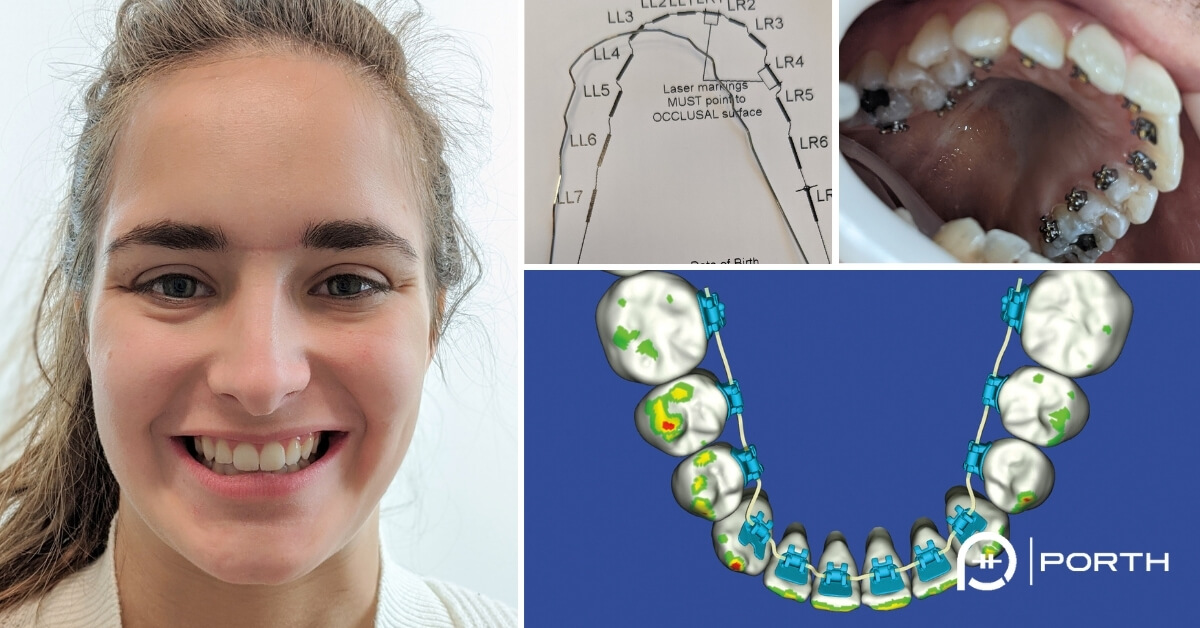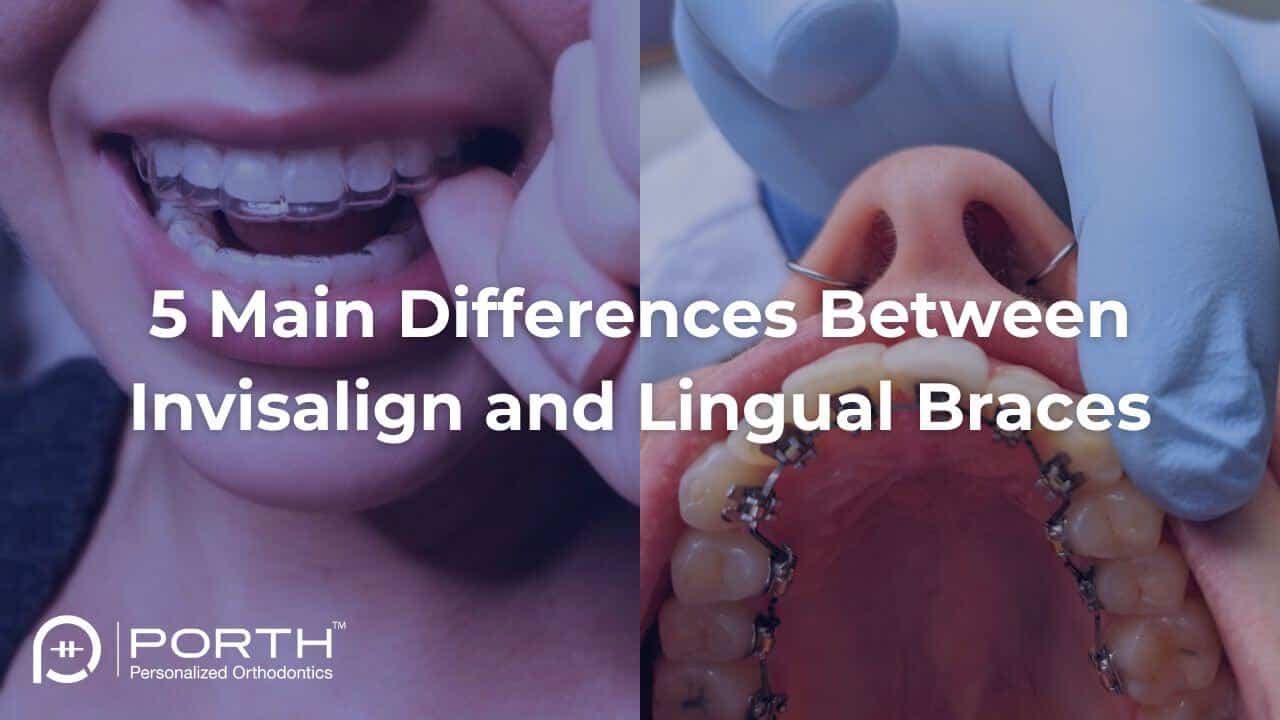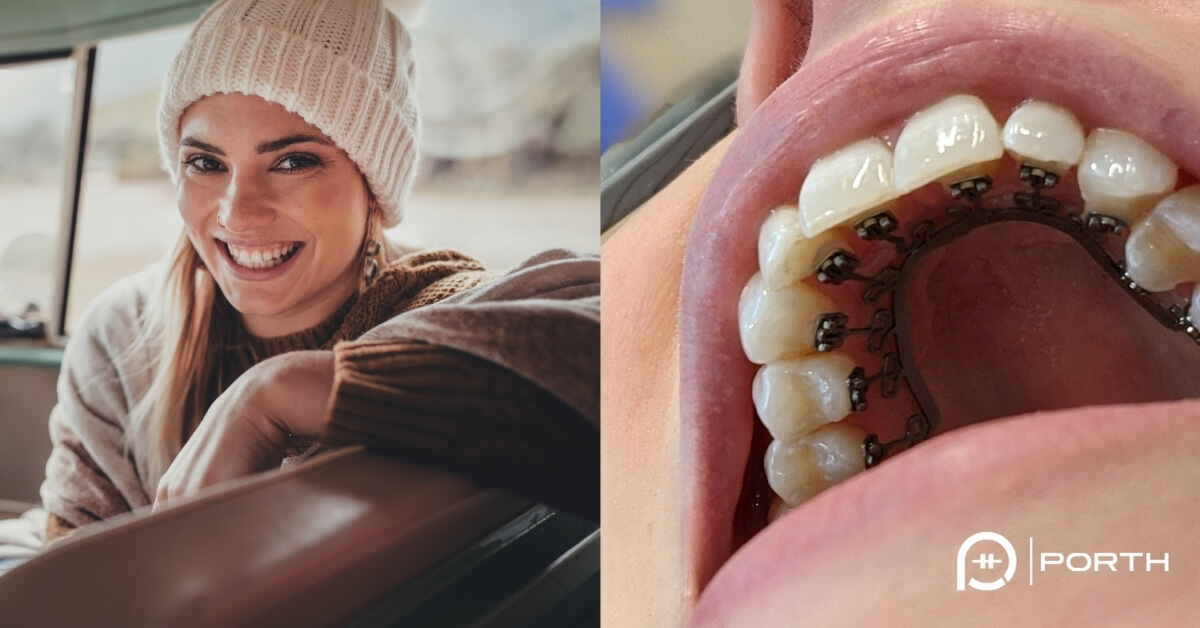What are Lingual Braces?
In recent years, the use of lingual braces has grown among orthodontists. Along with other advances in orthodontic treatment modalities, customized lingual systems are entering the market and gaining popularity, while traditional systems continue to adapt to digital platforms.
This has left many people questioning: what are lingual braces?
Lingual Braces vs traditional braces
Lingual braces are an excellent option for patients who are focused on an aesthetic orthodontic treatment option, and want to avoid the challenges associated with clear aligners. Unlike traditional braces, lingual braces are hidden from view.
They are also extremely effective at correcting the alignment of teeth and the bite. Lingual braces vs traditional braces – which would you choose?
Dental braces, as recommended by the American Association of Orthodontists, play a pivotal role in enhancing oral health by correcting crooked and crowded teeth.
Proper alignment not only results in a beautiful smile but also improves self-confidence and overall dental health.
Traditional braces treatment involve stainless steel metal brackets and elastic ties attached to each tooth, connected by rubber bands or ligatures to gradually shift teeth into their correct positions. For those self-conscious about aesthetics, tooth-colored clear braces or lingual braces offer less visible alternatives.
Lingual braces are placed on the back of the teeth—the side facing the tongue—making them virtually invisible. They function like traditional braces but are hidden from view, making them an excellent aesthetic alternative for both teens and adults – invisible braces.
Besides being discreet, lingual braces can be more efficient in achieving certain tooth movements compared to labial (conventional) braces and clear aligners, such as correcting a deep overbite or closing gaps between teeth.
For patients focused on an aesthetic orthodontic treatment and wanting to avoid the challenges associated with clear aligners, lingual braces are an ideal option. They are extremely effective at correcting tooth alignment and bite issues while remaining hidden from sight.
So, lingual braces vs. traditional braces—which would you choose?
What are the lingual orthodontic appliances?
The choices of bracket systems that bonds on the lingual surfaces of the teeth (behind the teeth) are expanding. CAD/CAM orthodontic care allows clinicians to digitally plan the bracket positioning with higher precision.
Lingual orthodontic solution is an esthetic version of traditional metal braces to a perfect smile. Lingual braces are a popular choice among adult patients.
Some of these lingual orthodontic appliances use straight wires and some use customized robotic bent ones. All of these bracket systems placed in the lingual side of the teeth and offer a truly invisible orthodontics. Teens and adult patients interested in invisible orthodontics and not want to wear clear aligners opt for lingual braces.

Comprehensive guide to lingual braces options
Currently, there are two options for lingual braces: stock or customized brackets. Stock braces can be placed on models of the teeth by a lab, either commercial or in-clinic, and will then be transferred into the patient’s mouth.
Customized lingual brackets are fabricated digitally based on the treatment specific needs. These brackets are built based on the shape and form of each individual. The most common system in the market is Incognito.
Each lingual system has its own biomechanical advantages and disadvantages for correcting teeth. You can learn more about the state of lingual appliance in a recent publication by Dr. Rooz in the Seminars in Orthodontics: lingual orthodontics special issue.
| Conventional Braces | Lingual Braces | Truly Invisible | Clear Aligners or Invisalign |
|---|---|---|
| Kids & Teens | Adults & Teens | All ages |
| Not depends on compliance | No hassle of wearing aligners | Easy to remove if needed |
| Esthetic color ties | Efficient in moving teeth | Partially esthetic compare to braces |
| Efficient | No attachments | Easier to maintain good oral hygiene |
Comparing lingual braces, clear aligners and conventional metal braces
Advantages of Lingual Braces
You’re trying to weigh up the pros and cons of lingual braces vs traditional braces in your head.
Lingual orthodontic treatment is similar to orthodontc treatment with braces on front of the teeth. A limited number of orthodontists offer this solution to correct malocclusion.
We’re here to help. Here are some of the main advantages of lingual braces:
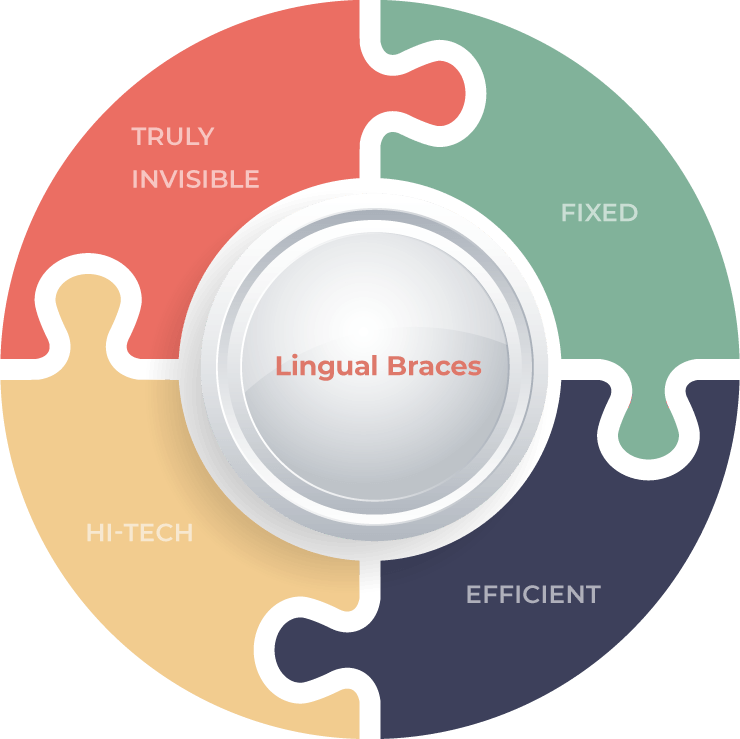
Lingual appliances are placed behind the teeth, so they are truly invisible. Patients in a professional or educational setting don’t have to worry about distracting look of conventional braces. Clear aligners provide a partially invisible option to patients yet attachments (tiny anchors) on front teeth can be noticeable.
Like labial (conventional) orthodontic systems, lingual braces are fixed. The brackets are cemented to the back of the teeth and the archwires are adjusted when the movement of the teeth is needed. There is no need to worry about removing, cleaning, or storing of your orthodontic appliances such as clear aligners like Invisalign, so there is no risk of losing them. Lingual braces require less maintenance than clear aligners, so they are well suited for those with a busy lifestyle.
Patients might experience discomfort with lingual braces, for which over-the-counter pain relievers are often suggested. To prevent tooth decay and maintain braces, the use of a specialized toothbrush, flosser, and a custom designed mouthguard, especially for those engaging in sports, is crucial.
Compared to clear aligner therapy, lingual braces are significantly more efficient at certain tooth movements. The position of these fixed appliances behind the teeth allows them to move teeth quickly and efficiently. The continuous light forces by these appliances is unique to alternative esthetic options namely clear aligners.
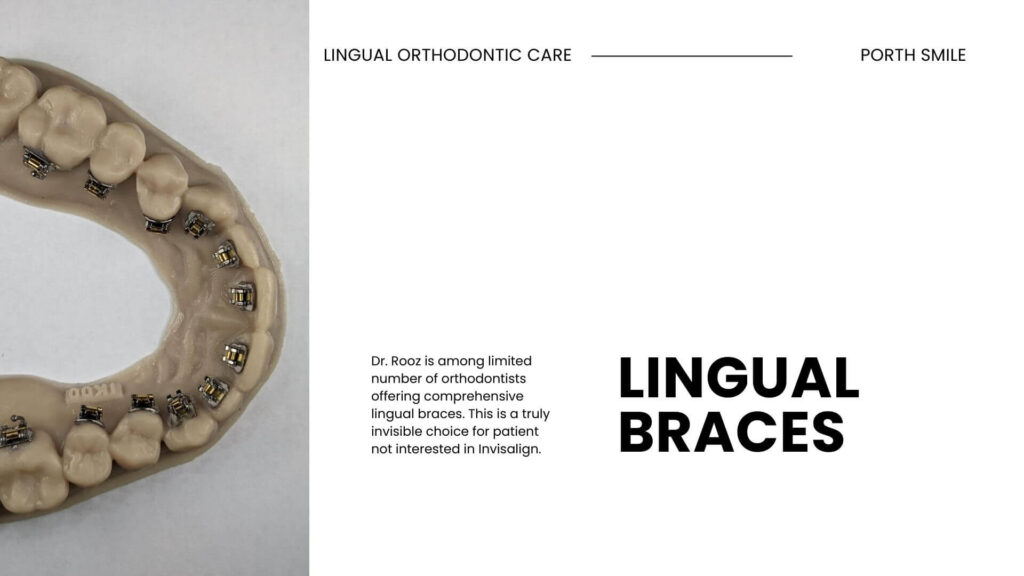
Challenges of Lingual Braces
Are lingual braces painful?
The question of lingual braces and pain is a common one. As we mentioned before, the lingual system is vastly different from other orthodontic appliances because the brackets and wires are placed behind the teeth rather than on them. It may take time getting used to having the appliance pressed against the inside of the mouth and tongue. Most patients become adjusted to the feeling in 2 weeks. We will walk you through this phase.
Do lingual braces work for everyone?
A major concern with lingual braces is oral hygiene. Like all braces, the brackets and archwires can interfere with a patient’s ability to clean or brush because it’s difficult to reach the gumline when the wires are in the way. Advances in technology provides us with options that help to overcome this issue. For example, the waterpik has been a game changer for all of our lingual patients. Lingual braces like other orthodontic appliances could result in lisp.
Do lingual braces cost more?
Lingual braces are a significant investment. Since they require complex wire patterns and a very technical skill set, appointments to adjust the wires take longer. All of these reasons contribute to a higher cost of treatment than traditional orthodontic procedures, but many patients find the cost of lingual braces is well worth the investment when considering all the factors.
Do all orthodontists do lingual braces?
Because lingual braces are less common than other orthodontic options, there is a very limited number of orthodontists who provide them. At Porth, our orthodontist and clinical assistants have worked with lingual orthodontics extensively, so patients have the option to choose custom lingual orthodontics with expertise supporting their treatment.
Schedule a free consultation to learn more.
Lingual Braces compared to other treatment options
- Do lingual braces hurt more than regular braces?
- Are lingual braces good?
- Do lingual braces take longer?
If you are interested in pursuing orthodontic treatment, there are many options to consider. The lingual system is a unique option. Treatment time with lingual braces are some times shorter. Lingual systems with smartwires can move your teeth to the proper position fairly quickly.
Lingual Braces vs Clear Aligners: Are lingual braces better than Invisalign?
In terms of appearance, the lingual system is most similar to clear aligners. They are both undetectable, but they use very different mechanisms to move the teeth. Clear aligners offer patients the freedom and convenience to remove their orthodontic appliance at will, so brushing is easier.
With lingual braces, however, there is no risk of losing your appliance because it is secured in place. Lingual braces are in place 24/7, allowing the system to correct teeth at all times. The effectiveness of clear aligners (e.g., Invisalign), on the other hand, can be hindered if the trays are left out of the mouth too long, so patients have to be extremely responsible and conscientious of their orthodontic appliance at all times.
With the use of clear aligners, attachments (tiny bumps) on front teeth are visible. Also, aligners are visible if one pays close attention. Lingual braces are the only truly invisible option in orthodontics.
Lingual Braces vs Traditional Braces: Are lingual braces effective?
Compared to traditional braces, lingual appliances offer a similar or sometimes better treatment outcome. They both offer the advantage of effectively moving teeth at all times with minimal work from the patient.
Ceramic braces on front of the teeth are an alternative to lingual braces. Accessibility to an esthetic orthodontic treatment option for adults is essential. This could be clear aligners, lingual braces, or ceramic braces.
Having braces, either behind or outside the teeth, requires a few weeks of adjustment to the brackets and wires in your mouth. This comes with a degree of pain during the first few weeks of your treatment. Collectively, it may result in major discomfort. Independent of the appliance we use to straighten your teeth (clear aligners or fixed appliances) the first few weeks can be challenging, as the teeth and jaw are tender and your mouth is adjusting to a foreign body.
Lingual Braces vs self-ligating braces (like Damon braces): Are lingual braces fast?
Self-ligating braces is an add on feature to a basic orthodontic appliance. Both outside and inside brackets can have the self-ligation feature. The majority of lingual systems are self-ligated. Despite lots of claims about self-ligation systems, including Damon braces, none of these claims has been proven in scientific studies. At Porth, we use a self-ligating brackets because not a lot of lingual brackets are available in the market.
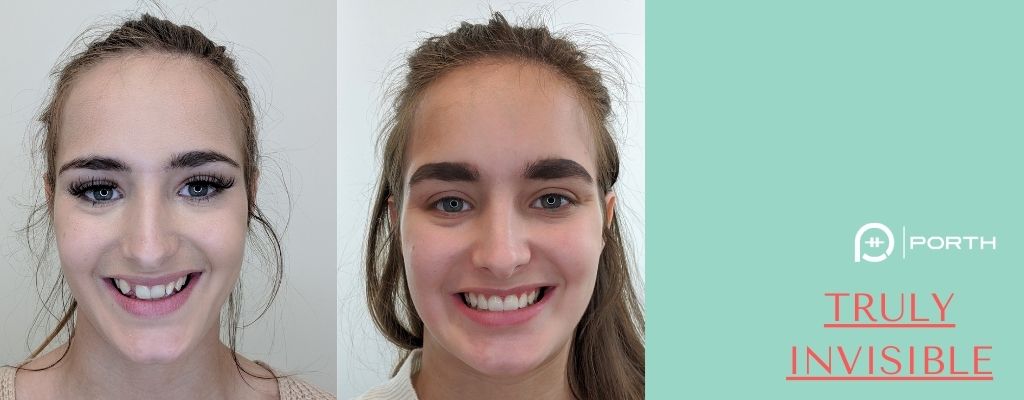
Am I a good candidate for Lingual Braces?
Here are three major factors you should take into consideration if you are considering lingual braces:
Bite:
Orthodontic treatment should provide long-lasting, stable results and an even bite. Lots of options are out there to straighten your teeth, including at-home orthodontics treatment. A thorough evaluation of your teeth and jaw bones, along with a comprehensive treatment plan, should be used to fix your teeth and bite in order to result in a life-long outcome. Finding a less expensive treatment, with no visits to the clinic, is a very risky choice.
Achieving an ideal bite with straight teeth is what we offer at Porth. Straightening teeth often results in major changes in your bite. Teeth should be moved with a plan to obtain an ideal bite.
Linguals braces are very unique because where and how they are positioned will affect the orthodontic process. There are both advantages and disadvantages to getting lingual braces. Your orthodontist can let you know if you are a good candidate for lingual braces by a comprehensive exam, taking records including x-rays, and a visual examination of your teeth and bone structure.
Two questions that we like our patients to think about when picking their appliance of choice are:
(i) how important is the esthetic option for them?
(ii) can they really wear clear aligners around 20 hours per day?
Investment:
Lingual braces require a higher investment than traditional braces because they require a high level of technical skill to adjust brackets and wires behind the teeth. It may also take the orthodontist longer to tighten lingual braces at each appointment because of their location in the mouth.
To protect you investment, you should wear your retainers every night, brush and floss to avoid white spots, and see a dentsit (DDS/DMD) on a regular basis.
Comfort/User preference:
Lingual braces take a while to get used to, especially if you have a sensitive mouth or teeth. Some people find them more comfortable than traditional braces or aligners because they feel more at ease knowing the brackets are hidden. Others prefer lingual braces because they are invisible, similar to clear aligners, but they don’t require the cleaning and maintenance of clear aligner trays. It really depends on your personal preferences.
Types of lingual braces
Like other orthodontic appliances, digital orthodontics allows for the introduction of new lingual systems, as well as further optimizing the existing lingual braces.
Here is a list of the most common types of lingual braces in the United States:
Incognito is a customizable lingual appliance. Both archwires and brackets are designed and fabricated based on each patient. The time required to fabricate this appliance and the issues associated with rebonding broken brackets are a few major challenges with this system.
Suresmile is a smart, fully digital system that allows orthodontists to plan the treatment digitally. The orthodontist then uses robotically bent wires to move the teeth to their ideal positions.
Aalias system is a straight lingual wire system. The main premise of this system is that the lingual wires have minimal to no bends, hence the appointments may be shorter. Despite the advantages of this system, the logistics of using this system in US remains a work in progress.
The future of lingual orthodontics
BRIUS, Brava, is one of the newest lingual systems that uses a bar and smart arms to independently move each tooth. Similarly, INBRACE is an appliance recently introduced to the market that uses customized, multi-looped archwires to induce tooth movement. This system utilizes a self-ligating mechanism to engage the wire with brackets. Both of these new appliances are promising; however, they need further study and development. Read Dr. Rooz’s publication on what future holds in lingual orthodontics.
You can book a virtual consultation to learn more about the lingual braces. This appointment will be a free consulation.
With the recent innovations in orthodontic technology, lingual orthodontics have become a more popular orthodontic system. Both orthodontists’ and patients’ attitudes toward lingual appliances have changed as they become more manageable with new technology. Contrary to what many believe, lingual orthodontics is here to stay!
